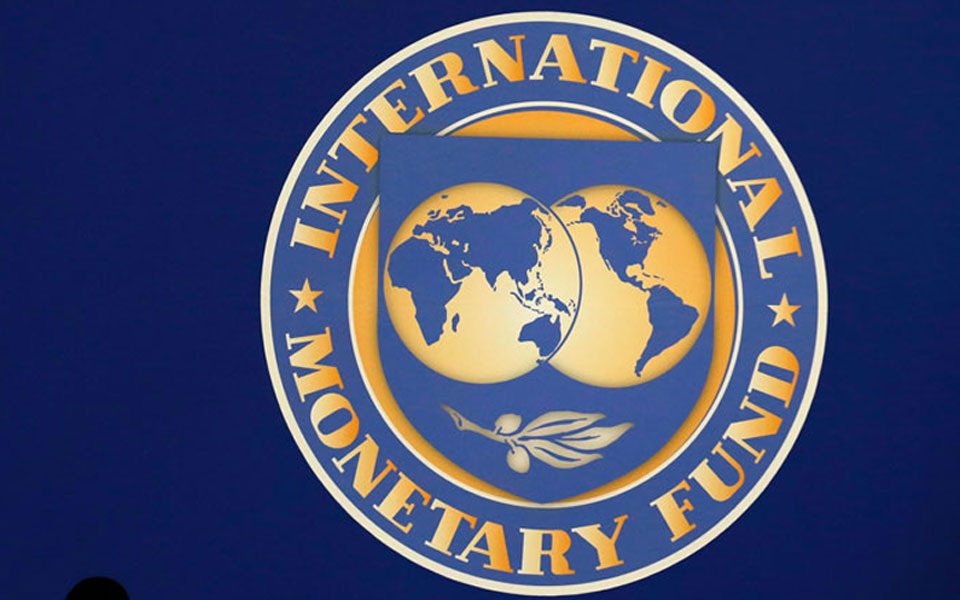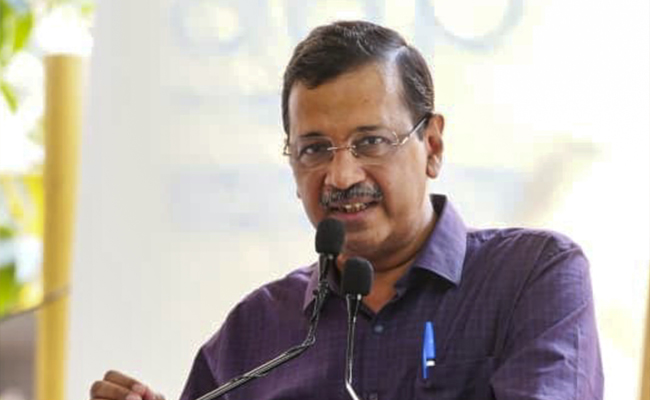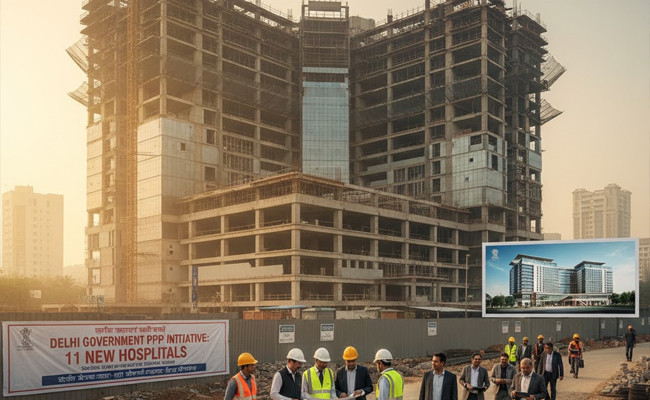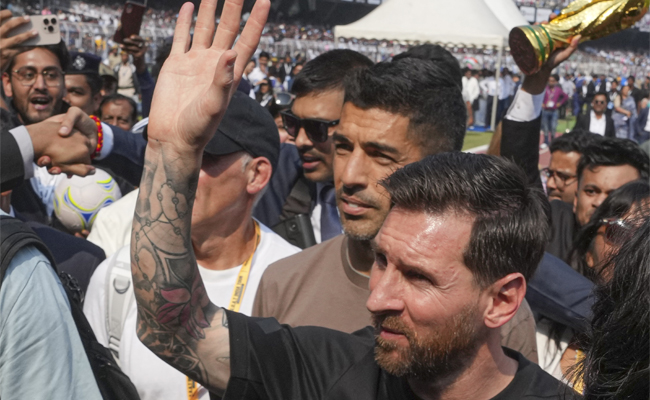Washington, Oct 9 : India is projected to grow at 7.3 per cent in 2018 and 7.4 per cent next year, the IMF said Tuesday, predicting that the country will regain the tag of the world's fastest growing major economy this year, surpassing China with more than 0.7 percentage points.
In 2017, India had clocked a 6.7 per cent growth rate.
In India, important reforms have been implemented in the recent years, including the Goods and Services Tax (GST), the inflation-targeting framework, the Insolvency and Bankruptcy Code, and steps to liberalise foreign investment and make it easier to do business, the International Monetary Fund (IMF) said in its latest World Economic Outlook (WEO) report.
"India's growth is expected to increase to 7.3 per cent in 2018 and 7.4 per cent in 2019 (slightly lower than in the April 2018 World Economic Outlook (WEO) for 2019, given the recent increase in oil prices and the tightening of global financial conditions), up from 6.7 per cent in 2017," it said in the WEO report.
This acceleration, the world body said, reflected a rebound from transitory shocks (the currency exchange initiative and implementation of the GST), with strengthening investment and robust private consumption.
India's medium-term growth prospects remain strong at 7 per cent, benefiting from the ongoing structural reforms, but have been marked down by just under a half percentage point relative to the April 2018 WEO, it said.
If projections are true, then India would regain the tag of the fastest growing major economy of the world, crossing China with more than 0.7 percentage points in 2018 and an impressive 1.2 percentage point growth lead in 2019.
China was the fastest growing economy in 2017 as it was ahead of India by 0.2 percentage points. For the record, the IMF has lowered the growth projections for both India and China by 0.4 per cent and 0.32 per cent, respectively, from its annual April's WEO.
Released in Bali during the annual meeting of the IMF and the World Bank, the IMF's flagship WEO said its 2019 growth projection for China is lower than in April, given the latest round of US tariffs on Chinese imports, as are its projections for India.
In China, growth is projected to moderate from 6.9 per cent in 2017 to 6.6 per cent in 2018 and 6.2 per cent in 2019, reflecting a slowing external demand growth and necessary financial regulatory tightening, the report said.
The 0.2 percentage point downgrade to the 2019 growth forecast is attributable to the negative effect of recent tariff actions, assumed to be partially offset by policy stimulus, it said.
Over the medium term, growth is expected to gradually slow to 5.6 per cent as the economy continues to make the transition to a more sustainable growth path with continued financial de-risking and environmental controls, it noted.
"Owing to these changes, our international growth projections for both this year and next are downgraded to 3.7 per cent, 0.2 percentage point below our last assessments and the same rate achieved in 2017," the report said.
The growth rate of the US for 2018 is 2.9 per cent and that of 2019 has been powered to 2.5 per cent.
"Looking ahead, renewed impetus to reform labour and land markets, along with further improvements to the business climate are also crucial (in India)," it said.
According to the WEO, in India, reform priorities include reviving bank credit and enhancing the efficiency of credit provision by accelerating the cleanup of bank and corporate balance sheets and improving the governance of public sector banks.
In India, a high interest burden and risks from rising yields require continued focus on debt reduction to establish policy credibility and build buffers.
"These efforts should be supported by further reductions in subsidies and enhanced compliance with the Goods and Services Tax," the IMF report said.
It also said inflation in India is on the rise, estimated at 3.6 per cent in fiscal year 2017/18 and projected at 4.7 per cent in fiscal year 2018/19, compared to 4.5 per cent in fiscal year 2016/17, amid accelerating demand and rising fuel prices.
The report said that aggregate growth in the emerging market and developing economy group stabilised in the first half of 2018.
Emerging Asia continued to register strong growth, supported by a domestic demand-led pickup in the Indian economy from a four-year-low pace of expansion in 2017, even as activity in China moderated in the second quarter in response to regulatory tightening of the property sector and nonbank financial intermediation, it added.
Let the Truth be known. If you read VB and like VB, please be a VB Supporter and Help us deliver the Truth to one and all.
Panaji (PTI): As part of a crackdown against tourist establishments violating laws and safety norms in the aftermath of the Arpora fire tragedy, Goa authorities on Saturday sealed a renowned club at Vagator and revoked the fire department NOC of another club.
Cafe CO2 Goa, located on a cliff overlooking the Arabian Sea at Vagator beach in North Goa, was sealed. The move came two days after Goya Club, also in Vagator, was shut down for alleged violations of rules.
Elsewhere, campaigning for local body polls, AAP leader Arvind Kejriwal said the fire incident at Birch by Romeo Lane nightclub at Arpora, which claimed 25 lives on December 6, happened because the BJP government in the state was corrupt.
An inspection of Cafe CO2 Goa by a state government-appointed team revealed that the establishment, with a seating capacity of 250, did not possess a no-objection certificate (NOC) of the Fire and Emergency Services Department. The club, which sits atop Ozrant Cliff, also did not have structural stability, the team found.
The Fire and Emergency Services on Saturday also revoked the NOC issued to Diaz Pool Club and Bar at Anjuna as the fire extinguishers installed in the establishment were found to be inadequate, said divisional fire officer Shripad Gawas.
A notice was issued to Nitin Wadhwa, the partner of the club, he said in the order.
Campaigning at Chimbel village near Panaji in support of his party's Zilla Panchayat election candidate, Aam Aadmi Party leader Kejriwal said the nightclub fire at Arpora happened because of the "corruption of the Pramod Sawant-led state government."
"Why this fire incident happened? I read in the newspapers that the nightclub had no occupancy certificate, no building licence, no excise licence, no construction licence or trade licence. The entire club was illegal but still it was going on," he said.
"How could it go on? Couldn't Pramod Sawant or anyone else see it? I was told that hafta (bribe) was being paid," the former Delhi chief minister said.
A person can not work without bribing officials in the coastal state, Kejriwal said, alleging that officers, MLAs and even ministers are accepting bribes.





